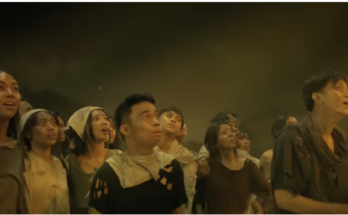WOMEN are the muses of art in museums, but rarely the creators. Their work is a fraction of what’s displayed in galleries but that’s not due to the lack of females in art.
According to the National Museum of Women in the Arts in Washington, D.C., 51 percent of visual artists today are women. But when it comes to exhibitions and gallery representation, the numbers tell a less optimistic story.
In London, for example, 78 percent of the galleries feature more men than women. A mere 13 percent of the artists on view in major US museums are female. And museum directors are majority male. (The top three museums in the world – British Museum in London, the Louvre in Paris and Metropolitan Museum of Art in New York – have never had female directors.)
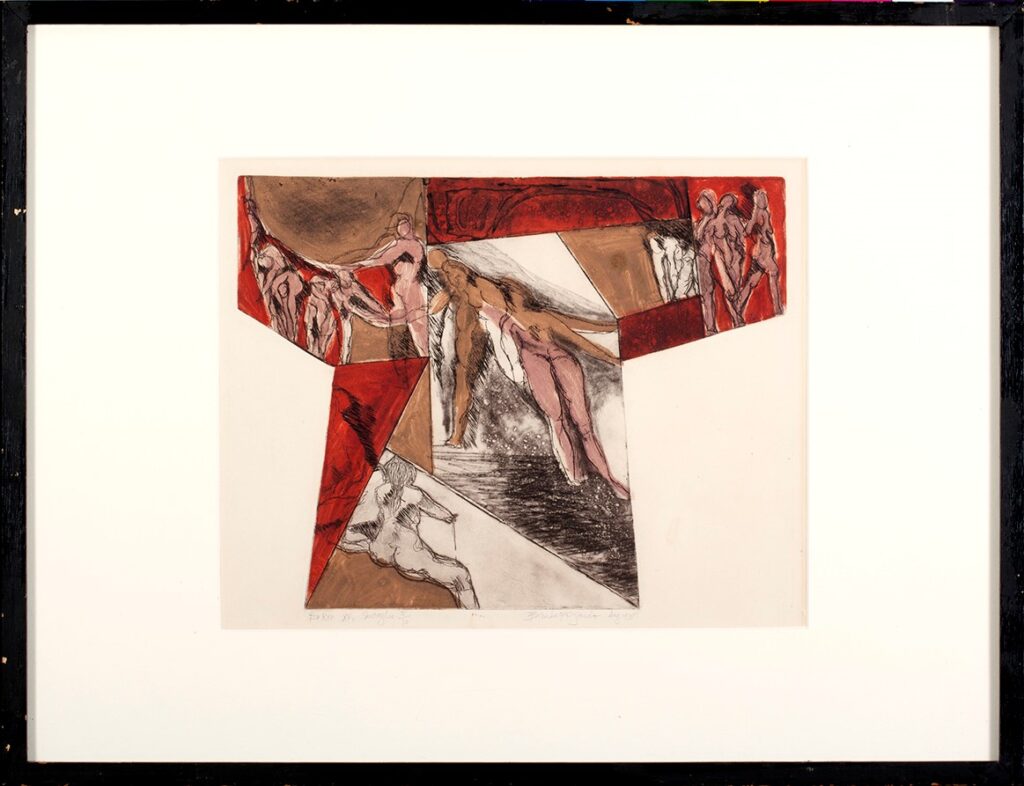
At auctions, 96.1 percent of artworks sold are by male artists. The most expensive work sold by a woman artist, Georgia O’Keeffe’s “Jimson Weed/White Flower No. 1”, was in 2014 for $44.4 million – over $400 million less than the record for a male artist: Leonardo da Vinci’s “Salvator Mundi” which sold in 2017 for $450.3 million. The record for the most expensive creation by a living female artist was set in 2018 by Jenny Saville, whose painting “Propped” (1992) sold for $12.4 million. This sum is still dwarfed, of course, by the record for a living male artist, set in 2019 – a Jeff Koons sculpture that sold for $91.1 million.
“In the Philippines, we have 17 Filipino visual artists who are named and conferred the National Artists Award – the highest recognition given to individuals for their significant contributions in Philippine arts and culture. And guess what? All of them are male. While the other art fields — music, dance, theater and film have women National Artists, visual arts have always been dominated by male artists,” said Michelle Nikki Junia, vice-chairperson of the board of trustees of the Cultural Center of the Philippines (CCP).
Why are women in art underrepresented and undervalued? Art history experts point to a centuries-old pattern of women being left out of the art world. Back to the Renaissance, females were kept out of art schools and institutions. Now, they make up the majority of art students and working artists but they’re still catching up to that long history of exclusion. The sad truth is that the belief that women are inferior artists still exists in the minds of many who make the major decisions.
Shifting landscape
However, as the conversation on gender inequities in art continues, the CCP Visual Arts and Museum Division is determined to change the narrative and put a spotlight on female artists through its first traveling exhibition of the year entitled “Woman: Thesis and Antithesis”. The ongoing show features selected artworks from the CCP 21AM Collection until June 24 at the Yuchengco Museum, RCBC Plaza, Ayala Avenue, Makati City.
“This is our joint museum effort to highlight a thematic exhibition that explores the role of women within herself and in society,” said Yvonne Yuchengco, chairperson of the Yuchengco Museum, Inc.
The bulk of the exhibition are works from the 21st Century Art Museum (21AM). (Barely 20% of the collection is by women.) This is essentially the CCP visual arts and ethnographic collection together with the defunct Museum of Philippine Art but with cyberspace as an additional platform. Complimenting it are key pieces from the Yuchengco collection.
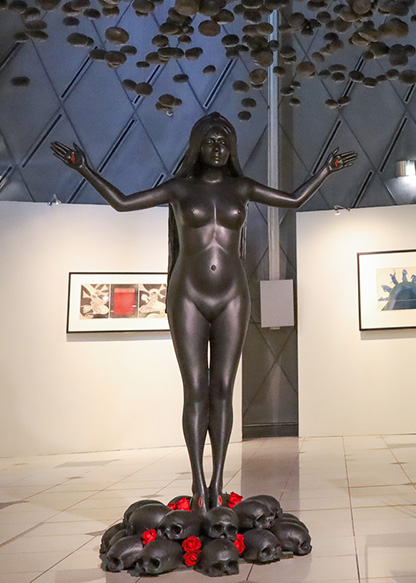
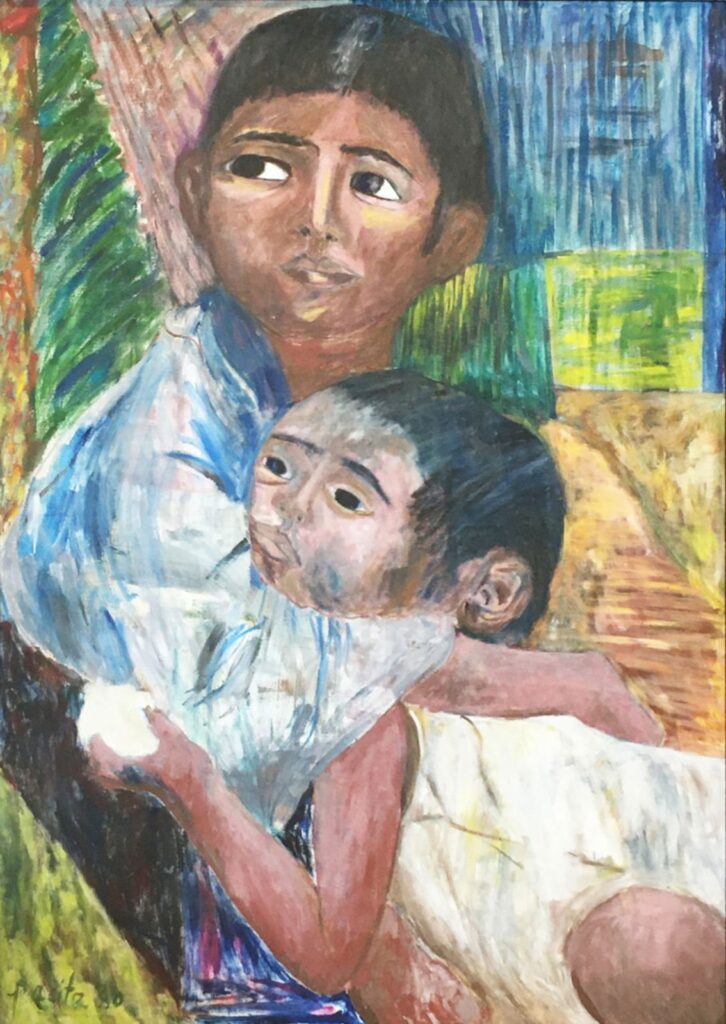
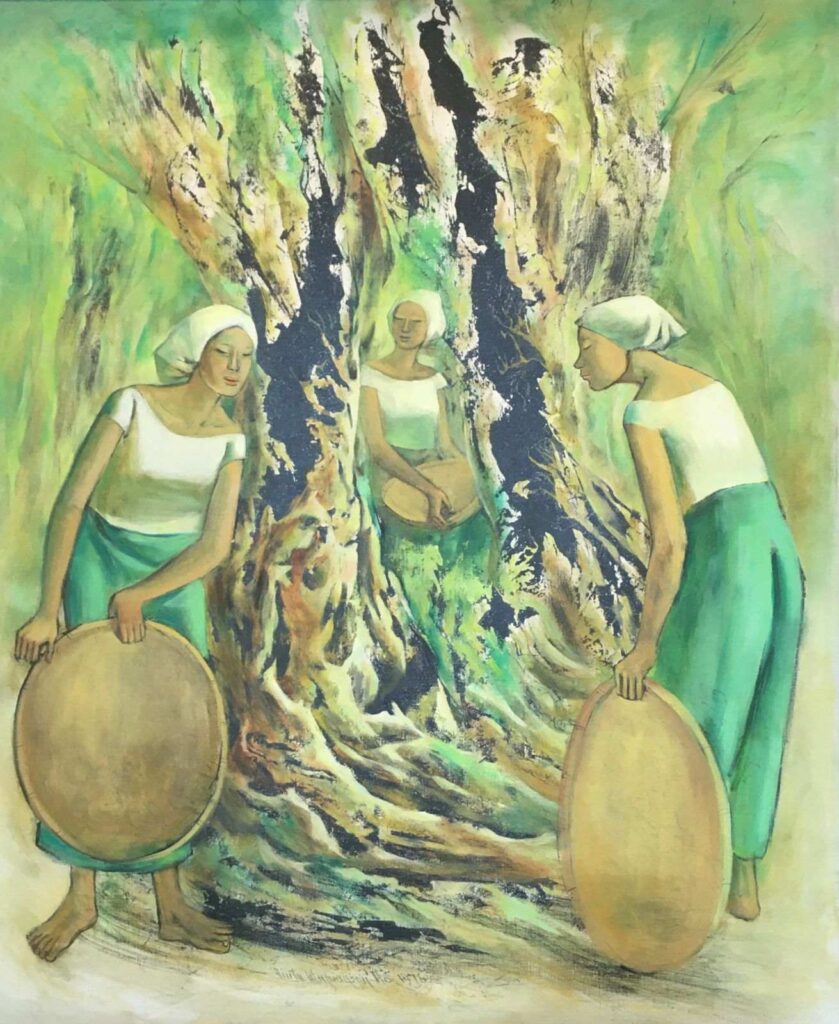
The show is curated by Yuchengco Museum’s director Jeannie Javelosa and showcases works by 45 artists – 24 are female and 21 are male. It highlights pieces that explore women as subject matter in the Women in Society component, as well as works created by Filipino female artists in Women Expressions.
Displayed at the ground floor of the museum, the Women in Society collection poses the question: Are women being represented properly? Or underrepresented and even misrepresented? These are important issues today as women’s role in society has evolved significantly over time.
In the exhibit notes, “Filipino artists have extensively explored women as subject matter, as a form rendered through various styles from the figurative to the abstract; and as a subject in relation to her role in community as seen through the artist’s personal lenses. In the majority of the images, we find an almost romantic and inspirational idealization of woman and her role in society as mother, lover and partner in the domestic scene.”
A black and white work by National Artist Cesar Legaspi, “Maiden with Flowers”, illustrates this point with three female figures adorned with flowers. Here, women are perceived as beautiful, delicate creatures.
A cluster of pieces by Antonio Austria offers a folksy representation of women. They are seen as mothers and wives preoccupied with household concerns.
A group of works by National Artist Benedicto “Bencab” Cabrera features portraits that represent women as individuals. But these are clustered around an acrylic portrait entitled “A Gobernadorcillo and his Wife” – the woman once again a nameless though prominent figure.
There are also two works by National Artist Vicente Manansala: a mother and child contrasting with “Bottle Gatherers”, a grim depiction of women as junk gatherers.
Women take center stage
Meanwhile, Women Expressions creations become part of a continuum of women’s visual interpretations that continues to shift as political landscapes, women’s rights and the feminine spirit gain power in the world today.
Exhibited on the third floor, the second component showcases women artists (mostly Thirteen Artists awardees) as they “speak to the world using their art as the extension of their minds, hearts and spirits. They express particular issues they face as women: gender biases, provocative thoughts about religious and spiritual conviction, interpersonal relationships and the depth of complexities about identity formation.”
Many have feminist overtones that militantly advocate for changes in their roles as women and how they are perceived. A number are as aggressive in the exploration of materials and techniques as their male counterparts.
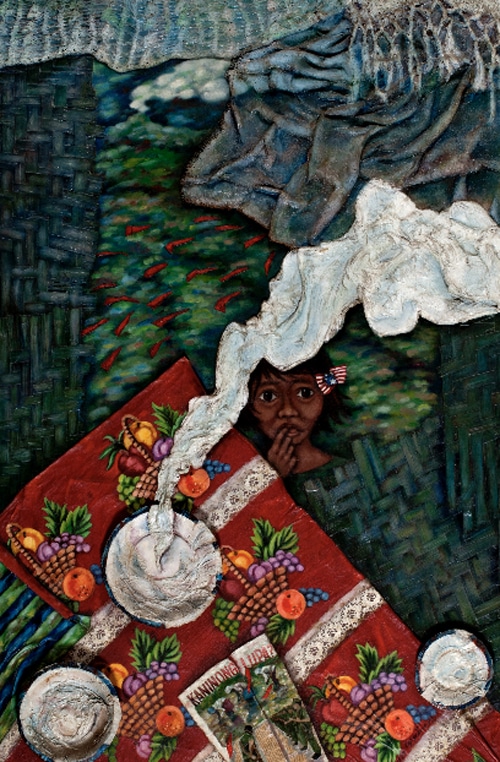
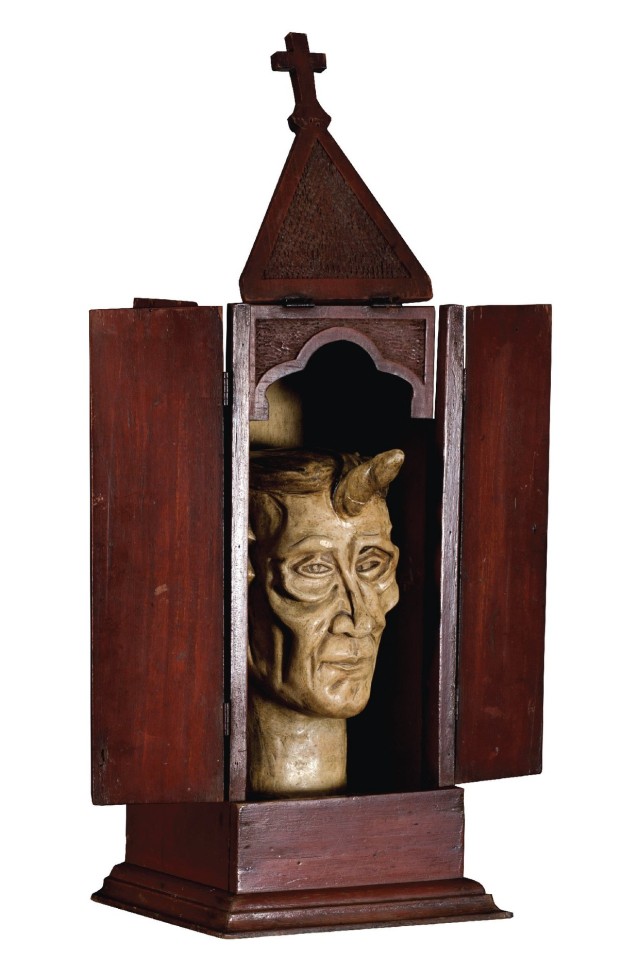
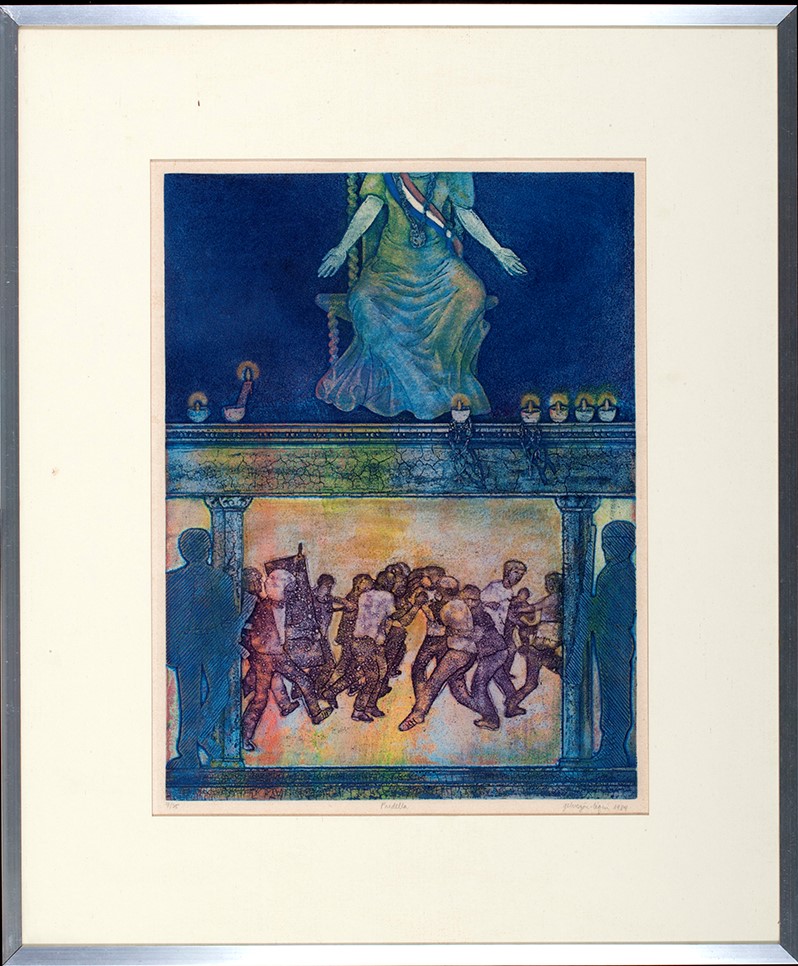
Through “Woman: Thesis and Antithesis”, the artists help us understand that there is no one female art but rather that art shapes and is formed by culture, that it conveys ideas about beauty, gender and power and that it can be an effective tool to question issues of race, class and identity.
The query is how to ensure that women are consistently represented throughout the year and not just during National Women’s Month.
“There is a law that requires all government agencies to allot a specific amount of their budget for projects that are related to women and gender and development,” CCP vice-president and artistic director Dennis Marasigan told BusinessWorld. “For the CCP this year, we made sure that there are programs that are either specifically geared towards these themes – the theme of gender and development – or that we include and make sure that there are components on the programs that address these concerns.”
Marasigan, chairman of the CCP Gender and Development Committee, ensures that this directive will move from being a requirement to something that would be deeply entrenched in the CCP’s programming.
He also said that a handbook on safe spaces is in the works to address many of the concerns related to gender and development. This, he hopes, can become a model for other organizations to follow suit.
Because we live in a fortunate time of history when women can now freely participate and become creators of art, we should further appreciate and celebrate their continuous contributions by being more supportive and constantly on the lookout for that next great woman artist.
The long and winding struggle of the female gender finally reached its peak as clearly, today’s finest artists consist of a large number of women, ranging from design arts, visual arts, and cultural arts to performing arts. Women aren’t only limited to being merely inspirational or model subjects of art; though we appreciate being aesthetic, women are now the ones creating art at their own freedom and creativity.
The art world is too often defined by manifestos and divided into movements, eras and styles. Artists are too often categorized by gender, race, nationality and educational pedigree. We easily forget that art’s true value exists beyond such petty considerations.
For ages, women have proven themselves with their diligence and skills that they are much more beyond what society has perceived them. It is discernible from historical instances that if given the opportunity and liberation to come out from the shackles, women can have limitless aspirations and reach wherever they never dreamt of.



